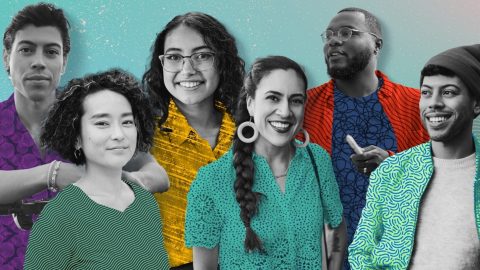Pushing for Inclusive Global Development at the United Nations
The following blog post was written by James Thurston – Director of International Accessibility Policy at Microsoft. James works with Microsoft’s global subsidiaries, NGOs, and governments around the world to develop public policies that support broad digital inclusion.
—-
People with disabilities belong at the heart of international development.
That was the message hundreds of government officials and representatives from around the world delivered when they gathered for the United Nations General Assembly’s High-Level Meeting on Disability and Development (HLMDD) in September.
They called for disability to become an integral part of a new international development agenda. Today, people with disabilities are not a focus of the Millennium Development Goals (MDG), which expire in 2015. As the UN considers its next plan it should focus on disability because 80 percent of the world’s 1 billion people with disabilities live in the developing world.
Two days before the HLMDD meeting in New York City Microsoft and six other international organizations released a new report that encourages the UN to consider disability explicitly in its development plans and to recognize the power of technology, particularly inclusive information and communication technologies (ICT), to transform lives of people with disabilities.
The report, “The ICT Opportunity for a Disability-Inclusive Development Framework” offers a plan for broad digital inclusion that would include persons with disabilities around the world. The six partners are:
It is essentially a roadmap that draws on expertise of more than 150 disability experts and leaders to show how the UN could incorporate accessible ICT into its global development agenda. The roadmap encompasses a broad range of technology, including web, mobile, software and apps, highlighting its importance in all aspects of life from education to independent living. The report also explains that everyone has a role to play in this area and lays out priority actions for all interested parties, including:
- Governments: Incorporate accessibility requirements in procurement policies.
- Private Sector: Train information technology professionals in ICT accessibility.
- Disabled Persons Organizations: Raise awareness of how ICT can facilitate economic and social inclusion.
At the UN events last month a series of compelling speakers pushed for disability and accessibility to be at the forefront of the UN’s development work. Perhaps the most persuasive was Ambassador Luis Gallegos of Ecuador, Vice Chair of the United Nations Human Rights Council and a leading force in the concluded negotiations over the UN Convention on the Rights of Persons Disabilities.
Ambassador Gallegos observed that everyone is either born with or acquires a disability in their lifetime, whether from aging, accident, war, malnutrition or other factors.
Disability rights and inclusion are not about “them,” Gallegos said. These issues are about all of us.







